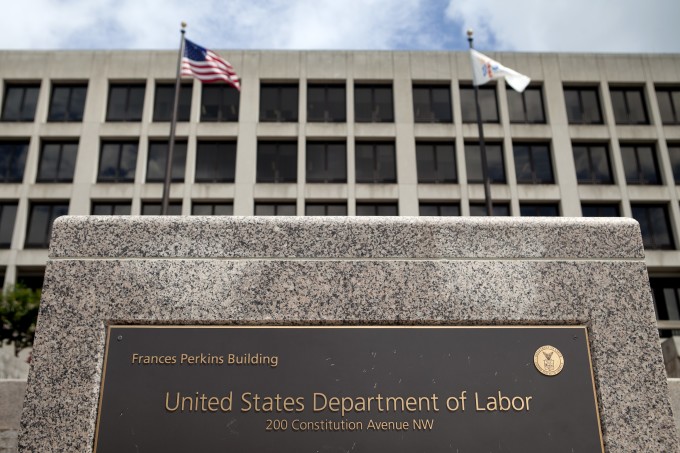
10 Apr Awaiting fate of fiduciary rule, plan sponsors turn attention to fee reasonableness
Uncertainty around the fiduciary rule has muddied the waters for retirement plan sponsors and service providers who are still trying to wrap their heads around the role they are expected to play under the regulation. But while plan sponsors await the rule’s fate — which was vacated in a March ruling by the U.S. Court of Appeals for the Fifth Circuit — experts say fee reasonableness should remain a priority.
The fiduciary rule brought fee reasonableness — meaning that while benchmarking your retirement plan against others, your plan’s fees should not be too high above the average — top of mind for many employers, says Shelby George, senior vice president, advisor services, at investment firm Manning & Napier. “It is often associated with confusion, both because the DOL never specifically defines what fee reasonableness is, and because it is an area where there has been an enormous amount of ERISA class action lawsuits,” she says. “If you are already accepting fiduciary responsibility, be cognizant that fee reasonableness is a key part of what you are evaluating in your fiduciary capacity.”
![[Image Credit: Bloomberg]](https://assets.sourcemedia.com/dims4/default/00b2514/2147483647/resize/680x%3E/quality/90/?url=https%3A%2F%2Fassets.sourcemedia.com%2Fe3%2F2f%2Fed4cd7814d9cae7c148fe3eed68d%2Fdol-bloomberg-2.jpg)
Those who don’t accept fiduciary responsibility will still have to keep reasonable compensation in mind because it is a foundational principal that applies throughout the world of financial advice, including the Internal Revenue Service, the Securities and Exchange Commission and the Financial Industry Regulatory Authority.
“Much of our understanding of what is and is not reasonable was shaped by ERISA class action lawsuits and allegations that have been made,” George says. “Those lawsuits were focused not on the fiduciary rule, but fiduciary responsibility to act in the best interest of plan participants. You need to make sure as fiduciaries you are only passing costs on to plan participants that are reasonable in light of the services they are receiving.”
Most tests of whether fees are reasonable don’t look at the value provided in return for the fees being charged, she says. Many assessments will look at market data and will conduct fee benchmarking both for advisory fees and investment management fees. If the fees being charged in a plan are much higher than what others are charging, the fees may not be considered reasonable.
A more subjective test will look at the value of the services being provided for the fee.
“The assessment needs to look at whether the value of the service is commensurate with the fee that is charged. That is very subjective and could be different depending on who is doing the evaluating. There is so much confusion over fee reasonableness,” George says.
Staying the course
In March, the U.S. Court of Appeals for the Fifth Circuit vacated the fiduciary rule. If that decision stands, the fiduciary rule will go away in May and the industry will go back to following the five-part fiduciary test that was used previously. Until the rule is either sent back to the full Fifth Circuit for a rehearing or is reviewed by the Supreme Court, however, the fiduciary rule’s best practices for when someone is considered a fiduciary will remain in effect.
Norma Sharara, a partner in Mercer’s employment practices risk management group in Washington, urges plan sponsors to keep following the rules as they have been. After the Fifth Circuit’s decision, she says, it is uncertain what the Department of Labor will do next.
“The DOL has a couple of choices. One is to do nothing,” Sharara says. “There’s no secret the Trump administration is not a fan of this rule. Some people are wondering why they would challenge what is a good outcome for them politically.”
The DOL could defend the agency’s right to make its own rule, she adds, by asking the Fifth Circuit to rehear the case with a full complement of judges. The Fifth Circuit opinion handed down on March 15 was made by only three Fifth Circuit justices out of 17. If the DOL opts for this course of action, she says, that request has to be filed by April 30. If the DOL doesn’t ask for a full circuit review or ask for an extension, the rule will be officially dead in May.
If the Fifth Circuit denies a rehearing, the DOL must file a petition with the Supreme Court to review the decision within 90 days of the denial.
“We don’t know that until we see what the Labor Department is going to do. The third option is to withdraw the rule. It seems to be what the Trump administration thought it could do when it took office last year,” Sharara says.
In the meantime, “plan sponsors and investment advisers need to stay the course to see what the Labor Department does next. It is a game changer for investment advisers,” she adds.
If the rule is officially killed, the fiduciary rule will go back to where it was since 1975. If that is the case, it is up to plan sponsors to reconnect with all of their plan service providers to make sure they know who is acting as a fiduciary to their retirement plan, she says.
Source: Gladych P. (2 April 2018). “Awaiting fate of fiduciary rule, plan sponsors turn attention to fee reasonableness” [Web Blog Post]. Retrieved from Employee Benefit News.






